NFL Draft Community Mailbag: Who's Better, Will Anderson Jr. or Jalen Carter?
NFL Draft Community Mailbag: Who's Better, Will Anderson Jr. or Jalen Carter?

A little uncertainty near the top of the NFL draft board always makes the upcoming class more interesting. The upcoming class is no different and is significantly more intriguing than 2022's group, as the elite talent at a couple of key positions could become interchangeable pieces.
Should Ohio State's C.J. Stroud or Alabama's Bryce Young be considered QB1? Will Georgia's Jalen Carter surpass Alabama's Will Anderson Jr. as the No. 1 overall talent?
This fantastic four will define the upcoming class. But plenty more must be decided over the next five-plus months. The rest of the incoming QB crop must settle itself. A few positions appear far weaker than others. Some small-school prospects will work their way into early-round consideration.
To better understand where everything stands, Bleacher Report's Scouting Department—which consists of Brandon Thorn, Brent Sobleski, Cory Giddings, Derrik Klassen and Matt Holder—continues to pore over tape, evaluate the nation's top prospects and discern between those available for next year's class.
As they continued their work, B/R opened its second community mailbag for the 2023 cycle to take the temperature of where things stand and allow readers to ask questions regarding the upcoming talent pool. Each of those within the scouting department gladly discussed what they've seen to date.
The biggest question doesn't necessarily revolve around the top quarterbacks, though inquiries about that position group are certainly coming. Defensive linemen Carter and Anderson worked their way into the starting point for this particular class.
Should Will Anderson Jr. or Jalen Carter Be Considered the No. 1 Overall Prospect?
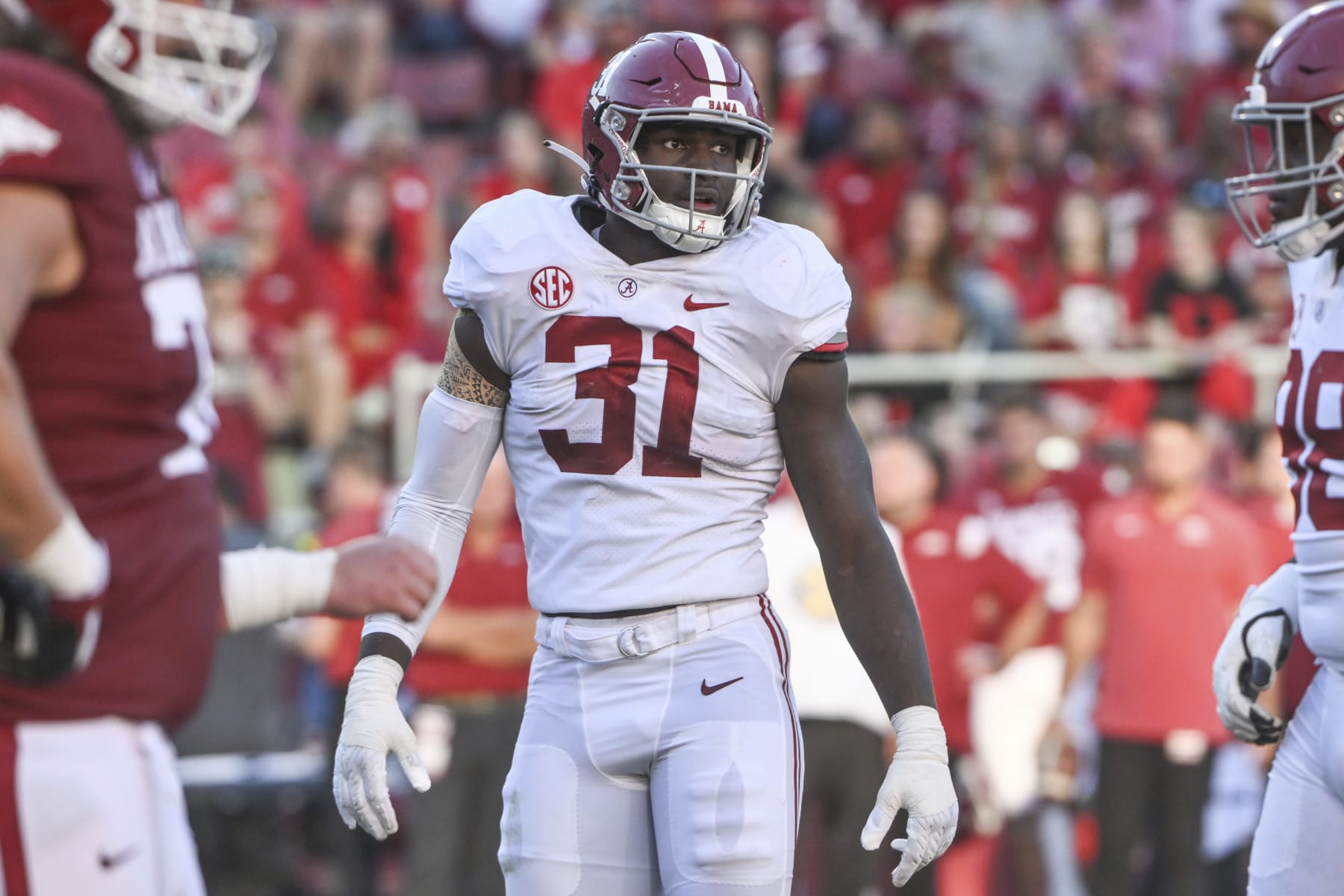
"Why is Alabama's Will Anderson Jr. ranked ahead Georgia's Jalen Carter?" —WALKERFRFR
Anderson entered this season as the consensus No. 1 overall prospect and remains atop our board.
Positional value certainly plays a part with the reigning SEC Defensive Player of the Year since he's a traditional edge-rusher, whereas Carter plays along the interior. From a developmental standpoint, Anderson is slightly more technically sound than Carter.
The Georgia junior has some inconsistencies with hand placement, while Anderson is a little faster off the ball and presents himself as a better pure technician off the edge.
Obviously, these are minor differences. Both should be great professionals, but it's the little things that separate elite prospects.
This duo harkens back to the 2019 draft class when Ohio State's Nick Bosa and Alabama's Quinnen Williams were graded as two of the top players on the board. They weren't the same style of players in relation to their current counterparts, but I can see them having similar career trajectories.
—Holder
Is C.J. Stroud Destined to Be Another Ohio State QB Bust?
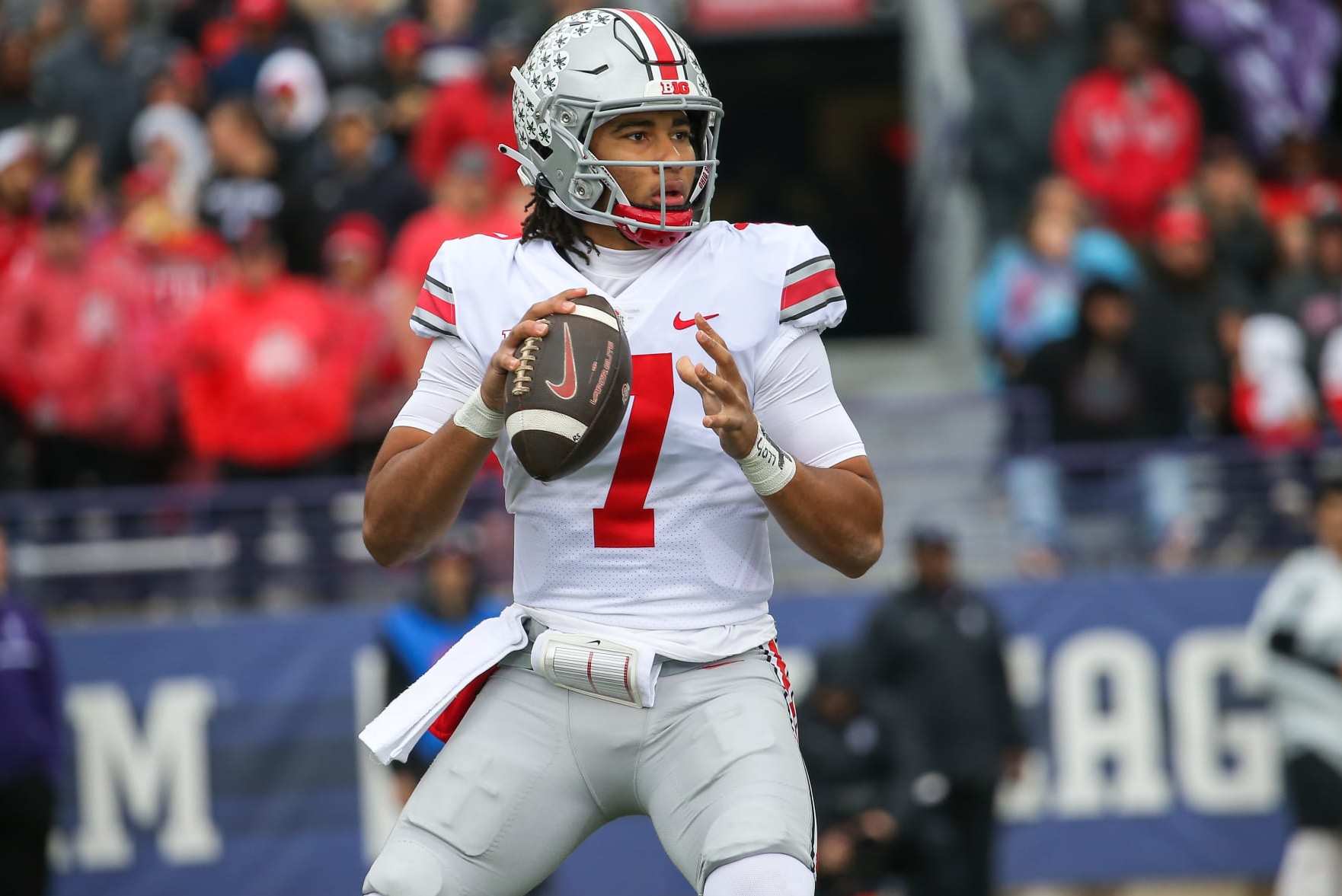
"Will the trend of disappointing Ohio State quarterbacks continue with C.J. Stroud?" —MMAniac
First, there isn't much of a negative Ohio State QB trend.
Nobody before Dwayne Haskins was a serious prospect—J.T. Barrett and Cardale Jones, as examples—and many of them didn't even play in Ohio State's current system, such as Terrelle Pryor and Troy Smith.
Haskins and Justin Fields are the only real prospects with whom to compare Stroud. Even then, every prospect is an individual who's evaluated based on their specific skill set and traits.
With that said, Stroud is a lesser prospect than Fields. The No. 11 pick in 2021 quarterback was thicker by 10 pounds, faster, had a better arm and one of the most accurate college passers in recent history.
Stroud doesn't have that kind of ceiling. He falls somewhere between Jared Goff and Dak Prescott as a prospect, which would still make him an NFL starting quarterback. Though he's maybe not as exciting of a prospect as many are hoping he'll be.
—Klassen
Will Tennessee Titans QB Hendon Hooker be Affected by Ageism?
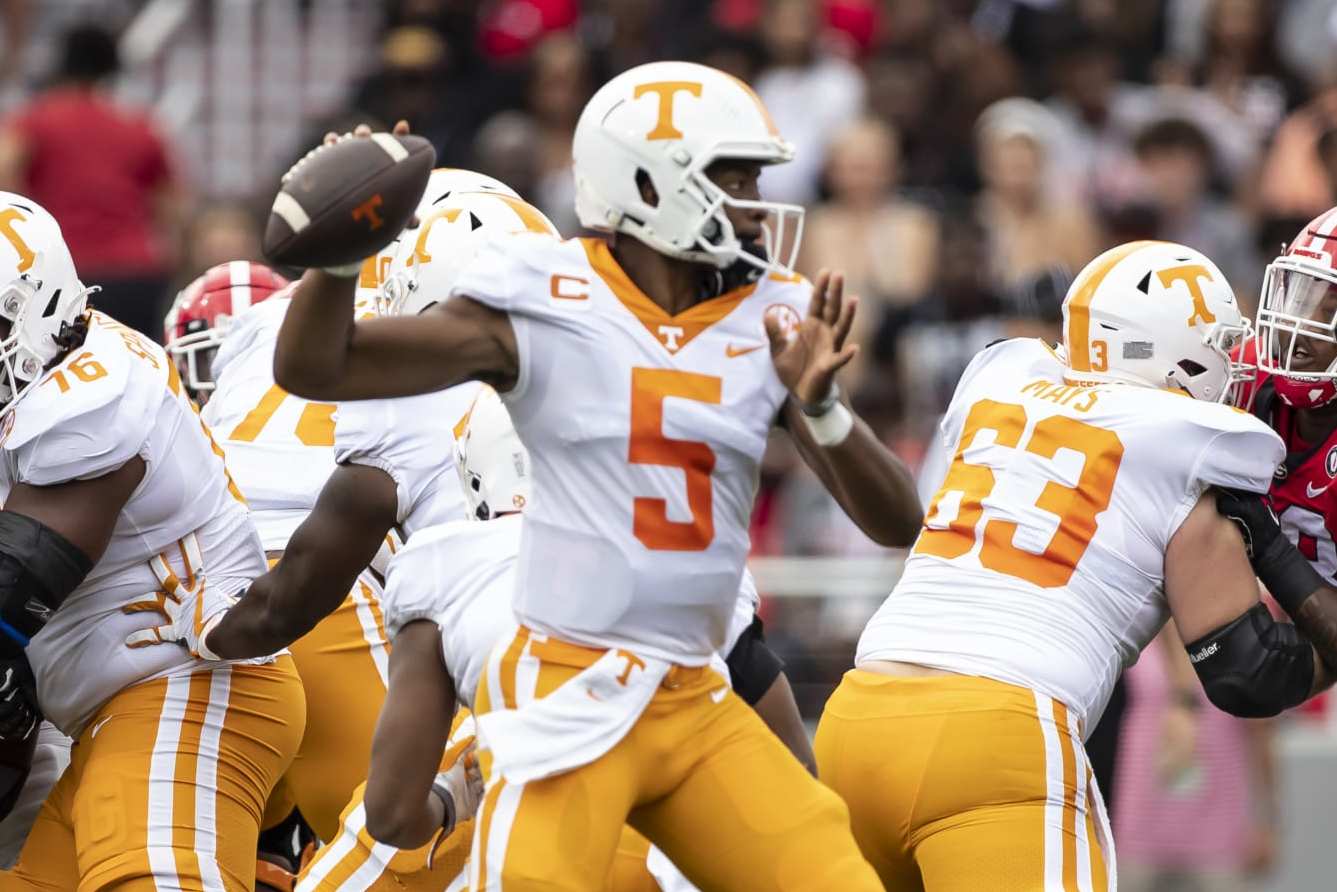
"How will Hendon Hooker's age affect his draft status?" —MMAniac
Hooker will turn 25 in January, and it'll be a point of contention in draft rooms. Even slightly younger yet mature quarterback prospects have a tough track record, let alone anyone older.
The real concern is that Hooker also has issues in his game.
First, the Tennessee Volunteers quarterback will be coming from an offense that is far, far removed from pro attacks. More often than not, the Baylor-inspired scheme creates easy reads and wide throwing lanes. As such, he's not an older prospect with translatable experience.
While Hooker is a nice athlete who can sling the deep ball, his tools are more good than great. These traits aren't convincing enough to make him a high-round draft pick, considering the rest of his incomplete and aging profile.
I fully expect Hooker to slide down boards once the college season is over.
—Klassen
Which QBs Reside Among the Second Tier of Prospects?

"Who are your top six quarterbacks not named C.J. Stroud, Bryce Young, Will Levis or Anthony Richardson?" —MMAniac
Stanford's Tanner McKee, Miami's Tyler Van Dyke and Washington State's Cameron Ward are for sure in that group.
McKee will be a pro's pro, though the 6'6", 230-pound signal-caller doesn't present the most exciting upside. Van Dyke has disappointed this season, in part because of shoulder injuries. But the tools and requisite aggression from the pocket are there.
Ward is a redshirt sophomore and has no need to declare early, but he's kind of like Kyler Murray-lite, and that will be a fun gamble to take.
Others such as BYU's Jaren Hall, Oregon's Bo Nix and Tennessee's Hooker are in the mix for the next tier. However, their spots among the top-10 quarterbacks are far from concrete. They all have somewhat interesting tools, particularly Nix.
Either I still need to see more of each or what I have seen to this point just doesn't feel like a top-100 prospect.
—Klassen
Which RB Prospects are Worthy of 1st-Round Consideration?

"Does a running back sneak into Round 1? If so, which one(s) have the best chance?"—sobe2HF
It would be an upset if Bijan Robinson didn't make it into the first round. Whatever anyone wants to say about running back value, the Texas runner is a top-10 talent in this class, and it's hard to imagine someone of that caliber will fall all the way out of the first round.
In fact, he's graded as the fourth-best overall prospect on B/R's initial draft board and the No. 1 skill-position player.
Alabama's Jahmyr Gibbs also has an outside chance of hearing his name called in the opening frame, but it wouldn't be surprising if he got pushed to Day 2 based on positional value alone.
—Klassen
Are There Ever Enough Quality O-Line Prospects to Complete a Team's Front 5?

"How do NFL teams fill out their offensive lines?" —Ewersbrkmyheart
It's difficult, because the demand for NFL-caliber offensive linemen outweighs the supply and likely always will.
This stems from the level of skill required to succeed at the position in the pro game combined with the rare size, length, strength, power and athletic ability needed as a baseline.
Big athletes gravitate toward the defensive line beginning in high school for a variety of reasons: the glamor associated with rushing the passer (and accumulating statistics, which blockers don't get to do) and the reliance on pure physical gifts more so than technique and skill.
Of course defensive linemen need skill and technique, but not to the extent their offensive counterparts do, largely due to the nature of the positions.
Defensive linemen are primarily moving forward at the snap of the ball, which is a more natural action. Offensive linemen mainly move backward, which is an unnatural movement, thus requiring more skill to hone and master.
With this understanding of how the two positions differ, it becomes much easier to see why NFL teams struggle to field a quality offensive line, much less retain any sort of competent depth.
There just aren't many human beings walking the planet capable of playing offensive line at the professional level, and a large portion of the ones who do are found on the opposite side of the ball.
—Thorn
Which Direction Should Jets Go Early In 2023 NFL Draft?
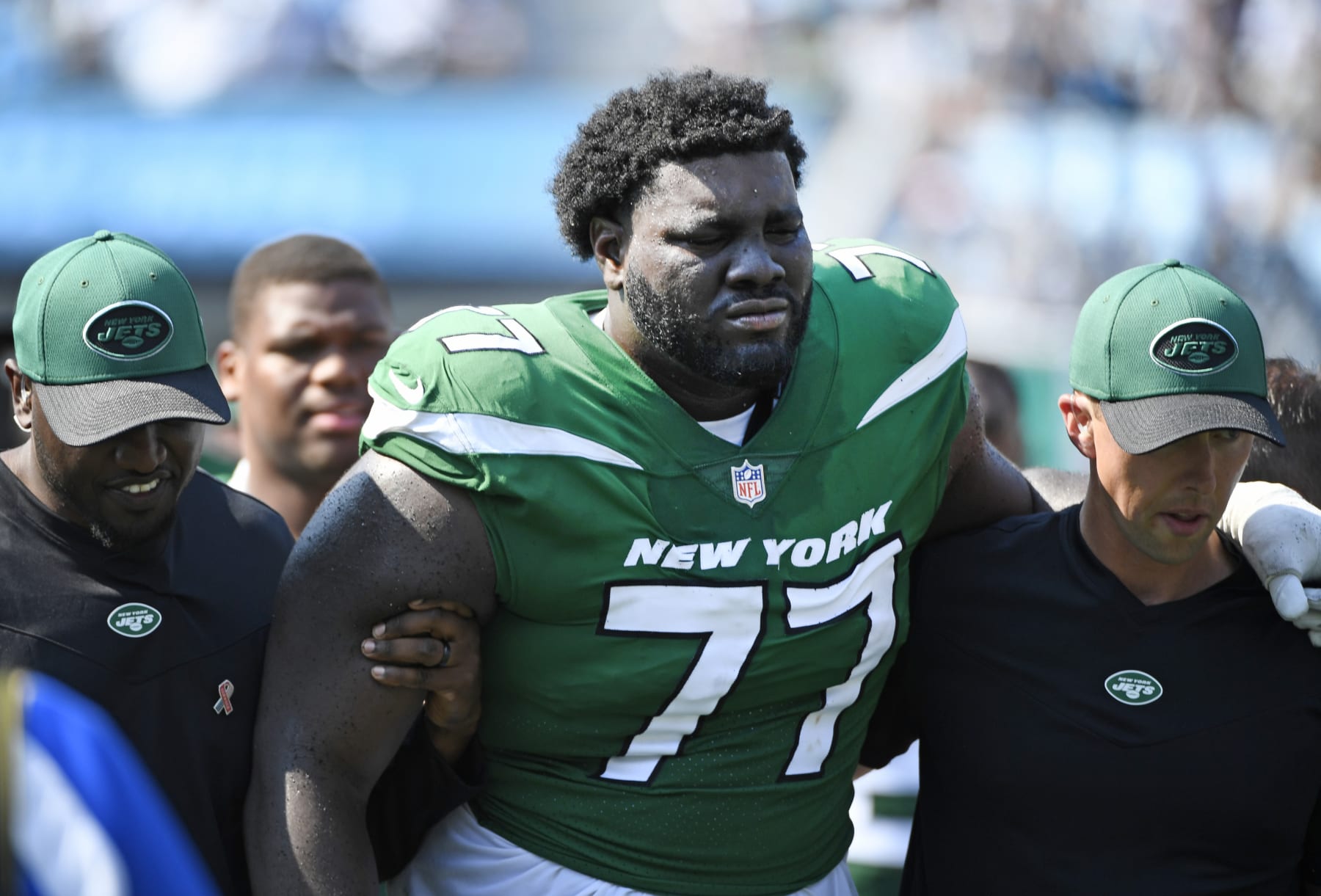
"What position should the Jets focus on during next year's first round?" —hoshko55
The New York Jets may have to go back to the offensive line for the third time in four draft classes.
With both Mekhi Becton and George Fant being on injured reserve because of knee setbacks, another offensive tackle might not be a bad idea. Furthermore, Fant will be a free agent after this season and Becton may not get his fifth-year option picked up, which would put him on the last year of his rookie contract in 2023.
Safety is another viable option.
For the '23 class, the Jets might be able to choose from a versatile safety whom they could line up in different positions or one who serves best as a strong or free safety.
A late-first-round selection, thanks to a strong start to the season, might steer them toward the position, since the safety class isn't particularly top-heavy. And with the success of rookie Sauce Gardner at cornerback, the Jets could very well be inclined to further shore up the secondary.
Either way, those two positions should be a priority going into next offseason.
—Giddings
What Are the Early Strengths, Weaknesses of 2023 Draft Class?
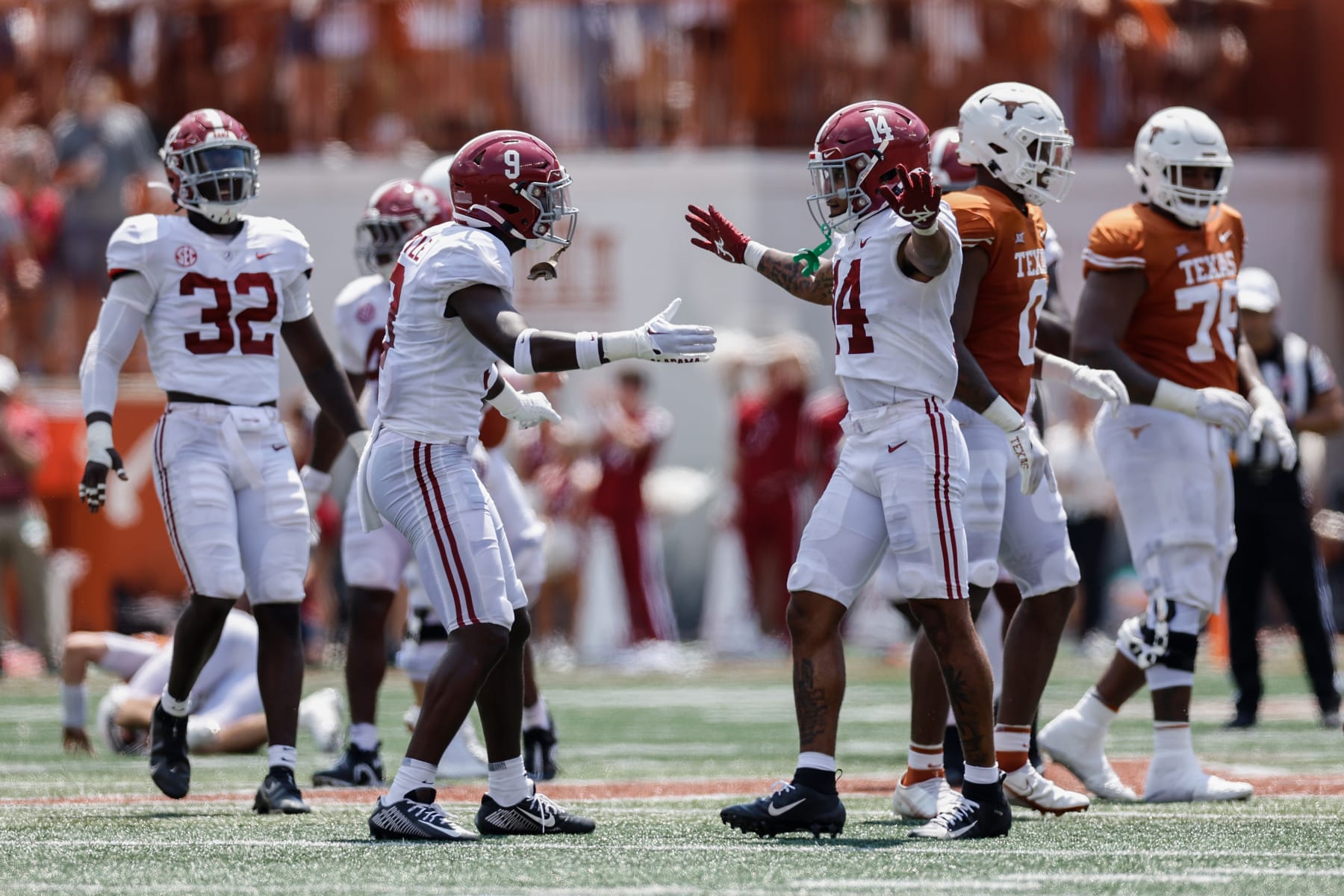
"What's the early predictions for the deepest and shallowest positions for the upcoming draft class?" —_Otoole_
Every draft class is different, and it's important to see how talent fluctuates from one year to the next.
Early signs show significant improvement at quarterback, which creates far more intrigue. To put in perspective just how awful 2022's QB crop really was: At No. 20, Kenny Pickett became the lowest-drafted QB1 since Jim Druckenmiller went 26th to the 49ers in 1997. No other quarterback came off the board until the third round in April.
Comparatively, Ohio State's C.J. Stroud and Alabama's Bryce Young are legitimate top-10 talents. Kentucky's Will Levis and Florida's Anthony Richardson will be in the first-round conversation. Multiple other options will likely hear their names called in the second or third rounds.
Beyond quarterback, defensive line will remain a defining position with Alabama's Will Anderson Jr. and Georgia's Jalen Carter as the top names—both of whom could have been the top pick in 2022 had they been available.
Running back and tight end should be significantly stronger with Texas' Bijan Robinson and Notre Dame's Michael Mayer after neither position posted a first-round prospect in April's draft.
Conversely, wide receiver will always be deep based on the position's growing importance from the high school to professional ranks. Yet this year's crop has disappointed to a degree.
Drake London dominated before suffering an injury last year. Ohio State's Garrett Wilson and Chris Olave maintained their top status all year. But some of this year's top options are undersized (USC's Jordan Addison), injured (Ohio State's Jaxon Smith-Njigba and TCU's Quentin Johnston) or disappointing (LSU's Kayshon Boutte).
Safety is another concerning position group simply because no one has established himself as a strong first-round option.
—Sobleski
Who Will Be the Indianapolis Colts' Next Franchise QB?
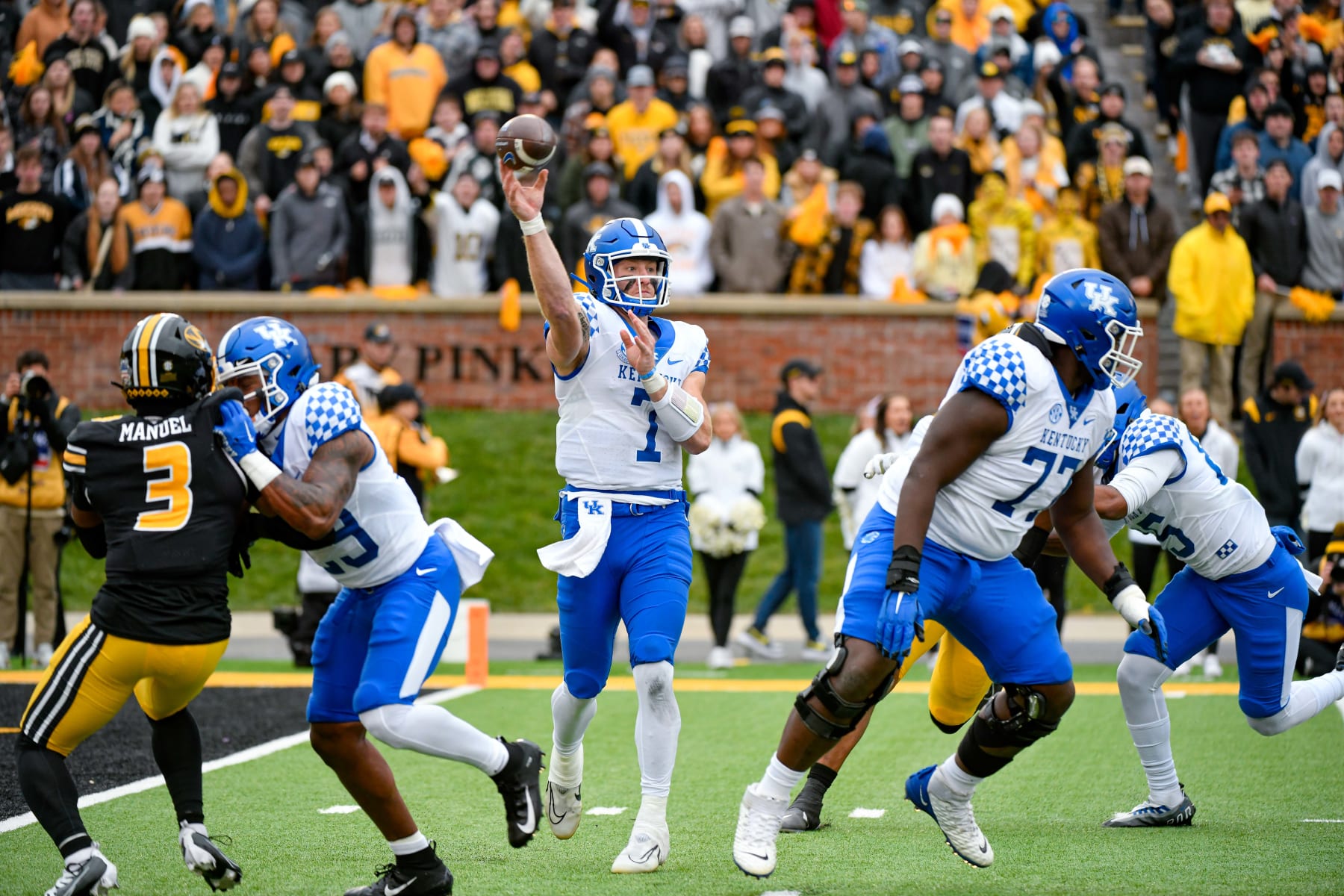
"If the Colts are aiming for a quarterback in next year's first round, who's the ideal target?" —ForgedFam
Jim Irsay's decision to hire Jeff Saturday as interim head coach befuddled most, if not all, of NFL media and those around the league. Yet the move includes a stroke of brilliance.
Either Saturday falls flat on his face and the Colts go into the tank to better position themselves for an elite quarterback prospect, or the team improves and the owner gets his guy to lead the team into the future.
Because of the uncertainty swirling around the franchise, when and where it will have its chance to address quarterback becomes difficult to project. But the decision will drive the team's entire offseason because it can't have another year with a Band-Aid behind center.
At 3-5-1, the Colts hold the 14th pick. Any selection between a top-10 pick and the team's current slotting makes Kentucky's Will Levis the logical fit for Indianapolis. The Colts aren't likely to finish poorly enough to claim a top-three selection and be in consideration for Ohio State's C.J. Stroud or Alabama's Bryce Young.
Levis is an excellent option, though. He's a burly 6'3", 232-pound quarterback with a strong arm and ample movement skills. The upperclassman will turn 24 before the start of his rookie year. As such, his maturity and experience with pro-style concepts should make for an easier transition as an immediate starter. Levis even received Peyton Manning's seal of approval
—Sobleski
Which Small-School Standouts Could Surprise and Become Early-Round Candidates?

"Are there any small-school prospects who everyone should watch for as strong Day 1 or 2 options?" —GorirraGrod
A similar question arose in this draft cycle's first mailbag. At the time, Army's Andre Carter II was the obvious answer based on his being the top talent from a non-pipeline program. This time, let's concentrate on the top three options found outside the FBS.
North Dakota State offensive lineman Cody Mauch, South Dakota State tight end Tucker Kraft and Princeton's Andrei Iosivas have chances to be the first names called among this year's pool of FCS prospects.
Mauch is next in line from the factory that the Bison program has become. Ten members of the subdivision powerhouse have heard their names called during the last nine draft classes, including four offensive linemen. North Dakota State's offense translates well as a pro-style scheme with a heavy emphasis on run blocking and play-action passing. Though its tackles are almost never asked to deep set.
The 6'6", 305-pound Mauch is a better prospect than either Cordell Volson, who's starting for the Cincinnati Bengals, or Dillon Radunz, whom the Tennessee Titans drafted in the second round in 2021.
Kraft returned to the field recently after dealing with an injured ankle for most of the first half of the season. The 6'5", 255-pound target is a potential mismatch in the passing game. Since reentering the lineup three weeks ago, the tight end has caught 12 passes for 181 yards and two scores. Behind Notre Dame's Michael Mayer, the race to become TE2 is wide-open, and Kraft has a legitimate shot at getting the nod.
Iosivas brings a different type of athleticism. As a wide receiver, the standout track athlete flies past Ivy League competition. In fact, the All-American won the 60-meter portion of the men's heptathlon in the spring. His 103.2 receiving yards per game rank fourth in the FCS.
Scouts will almost certainly be salivating over the wide receiver's combine workout numbers.
But the heptathlete doesn't just win on the gridiron with track speed. Iosivas has the size (6'3", 200 lbs) and toughness to work over the middle and pluck the ball out of the air even when being hit.
—Sobleski
